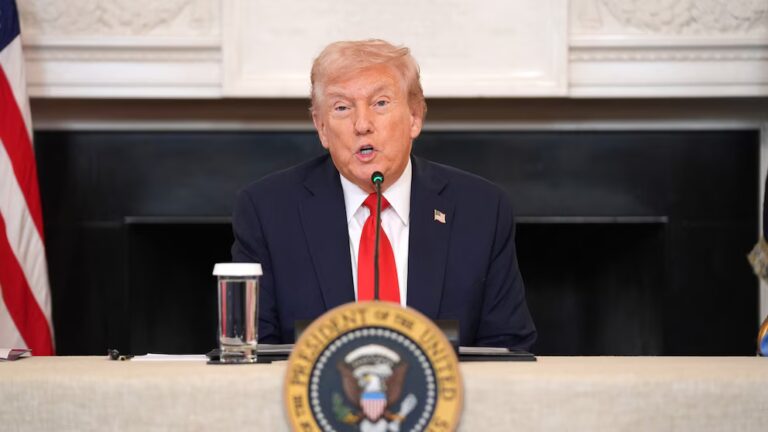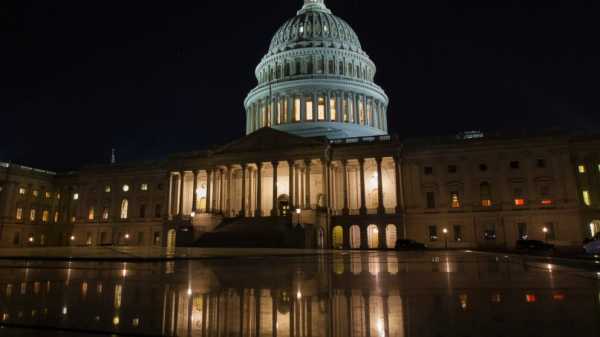In 1990, Playboy featured an interview with Donald Trump where the eventual commander-in-chief shared perspectives on global diplomacy, capital punishment, and his penchant for branding. He also mused on life’s existential void, remarking, “Life is merely what you do before death. It’s all rather bleak. We’re here for 60, 70, or 80 years, then vanish. You succeed, but ultimately, it hardly matters.”
Openly acknowledged is every president’s concern for their legacy. Yet Trump’s blunt 35-year-old reflection illuminates his trajectory to power and governing approach. Beyond desiring a legacy—positive or negative—or even dual presidential terms, his ultimate aim is achieving an enduring presence, a quest that continues to unfold.
Trump’s influence now seems irreversible. His evasion of legal repercussions for misconduct has normalized presidential impunity. His refusal to concede defeat in 2020 nearly triggered a coup, eroding public trust in elections. Meanwhile, stringent immigration policies, fixation on birthright citizenship, and suppression of free expression have contested foundational American ideals.
To grasp Trump’s political reshaping of America, one must recognize him not just as a leader but as a crude cultural symbol. His presidency’s peculiar emphasis on visual presentation—transforming federal architecture, dictating arts funding, and molding institutions—reveals an ambition to imprint his identity onto governance. Even after leaving office, he aims for America’s landmarks to evoke his persona.
Trump’s lifelong pursuit transcends mere fame; it craves omnipresence. Wealth and TV stardom were insufficient—he sought dominance through skyscrapers, tabloid notoriety, and reality TV, embodying a caricature of capitalist excess. This drive shaped his political volatility, shifting party affiliations and alliances while prioritizing self-promotion over policy consistency.
Related
- Why the most powerful men in America are the worst dressed
His true aspiration transcends the presidency: to personify America itself. Trump’s mission is a national rebranding—replacing ideals of collective progress with a self-glorifying narrative. Gone is the vision of America as an evolving experiment; in his view, the nation’s identity is now synonymous with Trump.
The roots of Trump’s aesthetic
Trump’s aesthetic emerged from 1980s New York opulence, where real estate, media prominence, and magazine covers symbolized status. That era’s flashy materialism suited him. In the Playboy interview, he defended ostentation as aspirational: “Wealth displays inspire success. Dynasty showcased it on TV. People need role models.”
His 1988 purchase of the Plaza Hotel—a $400 million venture ending in bankruptcy—was less about profit than prestige. “The Plaza was art,” he later said. Such ventures mirror his governance: prioritizing superficial grandeur over substance, whether through gilded decor or militaristic spectacles.
As president, Trump imposed his tastes via executive orders favoring neoclassical architecture, redesigning Air Force One to mirror his jet, and adorning the White House in gold. A $200 million East Wing expansion and Mar-a-Lago-inspired Rose Garden alterations further reflect his superficial vision.
Related
- Trump asked the Guggenheim for a Van Gogh. The museum offered a gold toilet.
His cultural influence extends beyond aesthetics. Overhauling the Kennedy Center board to chair it himself, Trump now curates awards, vetoing “wokesters” while considering posthumous honors for Pavarotti and Babe Ruth. He’s pressured museums to sanitize history, labeling the Smithsonian “OUT OF CONTROL” for critical exhibits and demanding celebratory narratives.
Unlike predecessors who framed America as an evolving ideal, Trump conflates nation and self, using symbolism—like banners of his likeness—to entwine his image with state authority. His vision glorifies power and wealth, positioning himself as inseparable from national identity.
The sinister motives behind this rebrand
While Trump’s stylistic impositions may seem reversible, they signal deeper ideological shifts. His rebranding merges politics with culture, embedding hypermasculine, exclusionary norms. The Kennedy Center purge targeted drag shows, deemed “anti-American,” while imagery like his post-assassination-attempt portrait and Kinkade-esque DHS ads promote nostalgia for a mythic past.
Related
- Trump, Biden, and the war over American masculinity
Policies like mass deportations and birthright citizenship attacks align with this ethos, defining Americanness through exclusion. Adviser Stephen Miller’s rhetoric echoes this, disparaging nations like Haiti and Somalia while advocating immigration restrictions. Such attitudes recall Trump’s 1970s housing discrimination lawsuits, underscoring a consistent worldview.
How Trump’s rebrand reinforces individualistic tropes
Trump’s self-mythologizing revives a distorted individualism—celebrating “self-made” success while erasing collective history. His White House redesigns and cultural interventions position him as the apex of achievement, fostering a cult of personality. This narrative rejects shared ideals, instead framing America as a survivalist arena where he reigns supreme.
His philosophy, echoing the 1990 Playboy interview, equates displays of power with virtue. By intertwining his brand with national identity, he seeks immortalization as America’s emblem—a figure synonymous with the nation’s image for generations.
Source: vox.com






